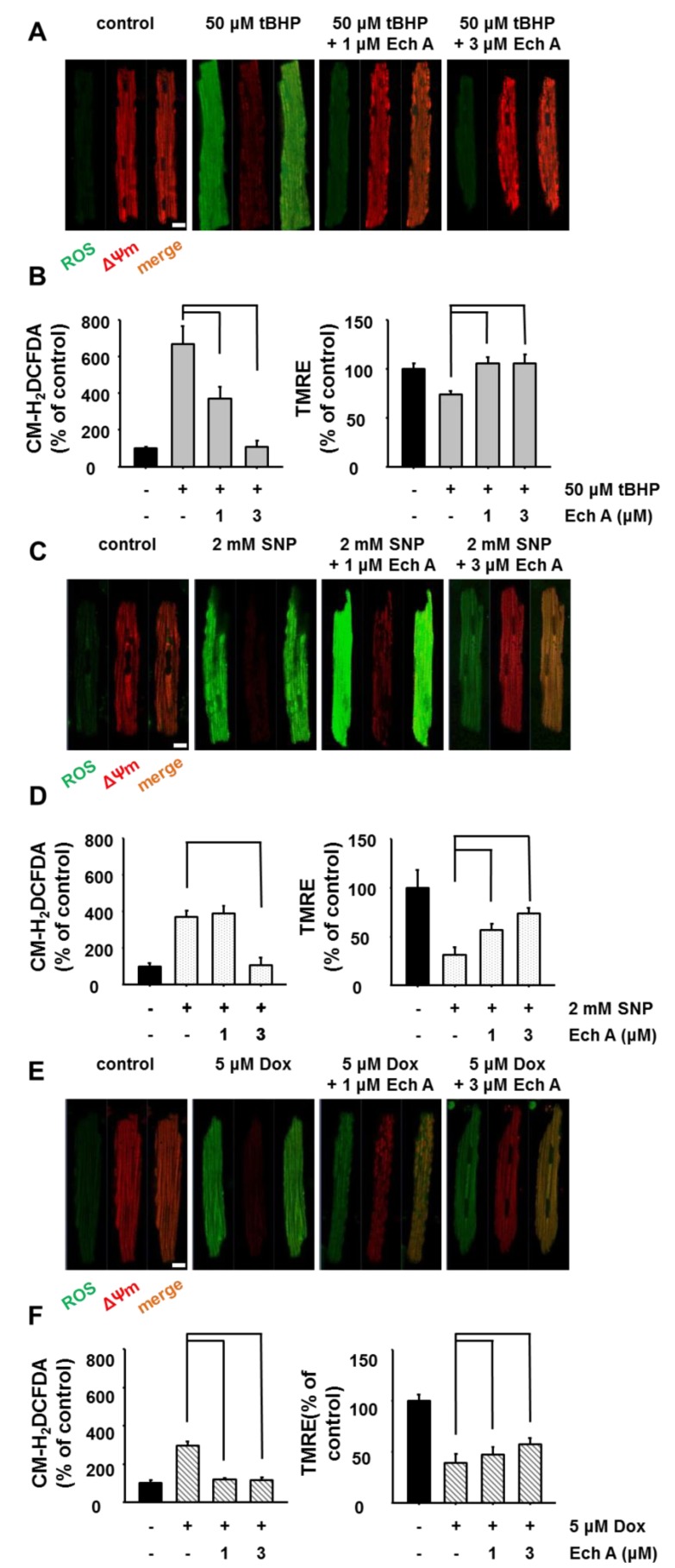Figure 4.
Ech A attenuated cardiotoxic agent-induced mitochondrial damage in isolated rat cardiomyocytes. Isolated rat cardiomyocytes were treated with cardiotoxic agents for 1 h, after which ROS level (CM-H2DCFDA, green color) and mitochondrial membrane potential (ΔΨm, TMRE, red color) were measured using confocal microscopy. (A) Cardiotoxic agent, tert-Butyl hydroperoxide (tBHP) rapidly increased ROS level (green, ROS indicator) and decreased mitochondrial membrane potential (red, ΔΨm). Co-treatment with Ech A attenuated the increase in ROS level and preserved mitochondrial membrane potential. Data are summarized in (B). (C) Sodium nitroprusside (SNP) rapidly increased ROS level (green, ROS indicator) and decreased mitochondrial membrane potential (red, ΔΨm). Co-treatment with Ech A attenuated the increase in ROS level and preserved mitochondrial membrane potential. Data are summarized in (D). (E) Dox rapidly increased ROS level (green, ROS indicator) and decreased mitochondrial membrane potential (red, ΔΨm). Co-treatment with Ech A attenuated the increase in ROS level and preserved mitochondrial membrane potential. Data are summarized in (F). Four independent in vitro experiments were performed. P < 0.05 vs. cardiotoxic agent single treatment group. Scale bar = 20 μm.

